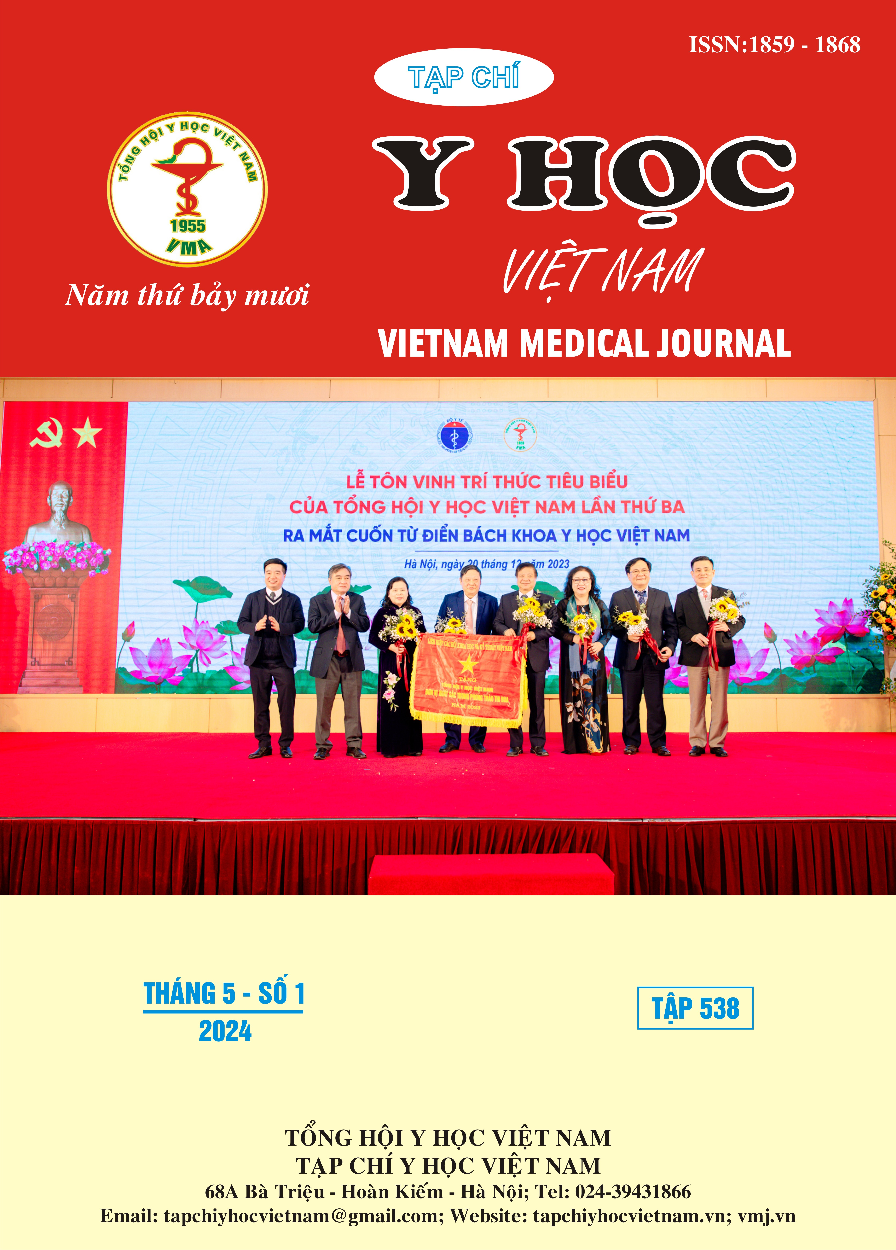TIÊN LƯỢNG BẢO TỒN TỬ CUNG DỰA TRÊN HÌNH ẢNH SIÊU ÂM TRONG PHẪU THUẬT RAU TIỀN ĐẠO TRUNG TÂM RAU CÀI RĂNG LƯỢC
Nội dung chính của bài viết
Tóm tắt
Mục tiêu: Đánh giá vai trò các dấu hiệu trên siêu âm và khả năng bảo tồn tử cung trong phẫu thuật rau cài răng lược. Đối tượng và phương pháp nghiên cứu: Nghiên cứu mô tả hồi cứu 76 sản phụ được chẩn đoán rau tiền đạo cài răng lược có sẹo mổ lấy thai được xử trí tại BVPS Hà Nội. Kết quả: 76 thai phụ tham gia nghiên cứu, không có sự khác biệt về tỷ lệ mỗi dấu hiệu siêu âm đơn lẻ với khả năng bảo tồn hay cắt tử cung với p > 0,05. Có khác biệt có ý nghĩa thống kê về khả năng bảo tồn tử cung giữa nhóm xuất hiện dưới 2 dấu hiệu trên siêu âm với nhóm có từ 2 dấu hiệu trên siêu âm với (p = 0,006 < 0,01, Se = 100%, Sp = 19%). Có sự khác biệt có ý nghĩa thống kê về tỷ lệ cắt tử cung giữa nhóm thai phụ có từ 3 dấu hiệu trên siêu âm với nhóm có dưới 3 dấu hiệu trên siêu âm (với p = 0,023 < 0,05, Se = 58,8%, Sp = 66,7%, OR = 2,86), thai phụ có dấu hiệu mạch máu vuông góc tới cơ tử cung có lượng máu mất cao hơn nhóm không có dấu hiệu này với p = 0,047. Kết luận: không có dấu hiệu siêu âm đơn lẻ nào quyết định được cắt tử cung hay bảo tồn tử cung nhưng thai phụ có từ 3 dấu hiệu trên siêu âm tiên lượng cắt tử cung cao trong phẫu thuật.
Chi tiết bài viết
Từ khóa
Rau cài răng lược, rau tiền đạo, siêu âm
Tài liệu tham khảo
2. G. Garmi and R. Salim (2012). Epidemiology, etiology, diagnosis, and management of placenta accreta. Obstet Gynecol Int, 2012, 873929.
3. S. Wu, M. Kocherginsky andJ. U. Hibbard (2005). Abnormal placentation: twenty-year analysis. Am J Obstet Gynecol, 192 (5), 1458-1461.
4. R. Faranesh, S. Romano, E. Shalev et al (2007). Suggested approach for management of placenta percreta invading the urinary bladder. Obstet Gynecol, 110 (2 Pt 2), 512-515.
5. A. G. Eller, T. F. Porter, P. Soisson et al (2009). Optimal management strategies for placenta accreta. Bjog, 116 (5), 648-654.
6. G. Daskalakis, E. Anastasakis, N. Papantoniou et al (2007). Emergency obstetric hysterectomy. Acta Obstet Gynecol Scand, 86 (2), 223-227.
7. B. Poljak, D. Khairudin, N. Wyn Jones et al (2023). Placenta accreta spectrum: diagnosis and management. Obstetrics, Gynaecology & Reproductive Medicine, 33 (8), 232-238.
8. H. E. Baumann, L. K. A. Pawlik, I. Hoesli et al (2023). Accuracy of ultrasound for the detection of placenta accreta spectrum in a universal screening population. 161 (3), 920-926.
9. T. K. Adu-Bredu, M. J. Rijken, A. J. Nieto-Calvache et al (2023). A simple guide to ultrasound screening for placenta accreta spectrum for improving detection and optimizing management in resource limited settings. 160 (3), 732-741.


